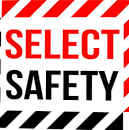MSMWHS201 – Conduct Hazard Analysis covers the skills and knowledge required to conduct a hazard analysis. These are typically called: Job safety analysis (JSA) Job hazard analysis (JHA) Job safety and environmental analysis (JSEA) Safe work method statement (SWMS)

Overview
MSMWHS201 – Conduct Hazard Analysis covers the skills and knowledge required to conduct a hazard analysis. These are typically called:
Job safety analysis (JSA)
Job hazard analysis (JHA)
Job safety and environmental analysis (JSEA)
Safe work method statement (SWMS)
It is not intended to apply to simpler routine hazard checks, such as ‘Take 5’, Step Back 5×5, five step or similar.
This might be done as an independent activity in order to identify hazards and the appropriate hazard controls, or it might be done as part of a broader process, such as identifying and applying for the permits required for a job.
The conducting of a hazard analysis may be required under a safety case, by organisation procedures or simply as being good practice.
This unit of competency applies to an individual working alone or as part of a team or group and working in liaison with other shift team members and the control room operator, as appropriate.
Pre-requisites
Nil
Co-requisites
Nil
Pre-entry Requirements
Long sleeves and long pants, Appropriate safety footwear
USI
Content
Defining the context for the hazard analysis
Legislative requirements
Risk assessment processes
Identifying hazards
Types of hazards
Assessing risk
Likelihood vs Consequence
Risk matrixes
Controlling risk
Hierarchy of controls
Residual risks
Monitoring and reviewing risk controls
Select Safety Tasmania is a locally owned and operated Work, Health and Safety training and consultancy company located in both Hobart and Launceston.
We are a dedicated team, who provide a wide variety of safety-related services and training courses to a broad cross-section of industry.
We work with you to understand your operational requirements in order to provide a user friendly, practical and tailored solution to suit your individual or business needs, whilst meeting legislative requirements.
Our core business is simplifying safety, environmental and quality control legislative requirements and applying them to your business.
© 2025 coursetakers.com All Rights Reserved. Terms and Conditions of use | Privacy Policy